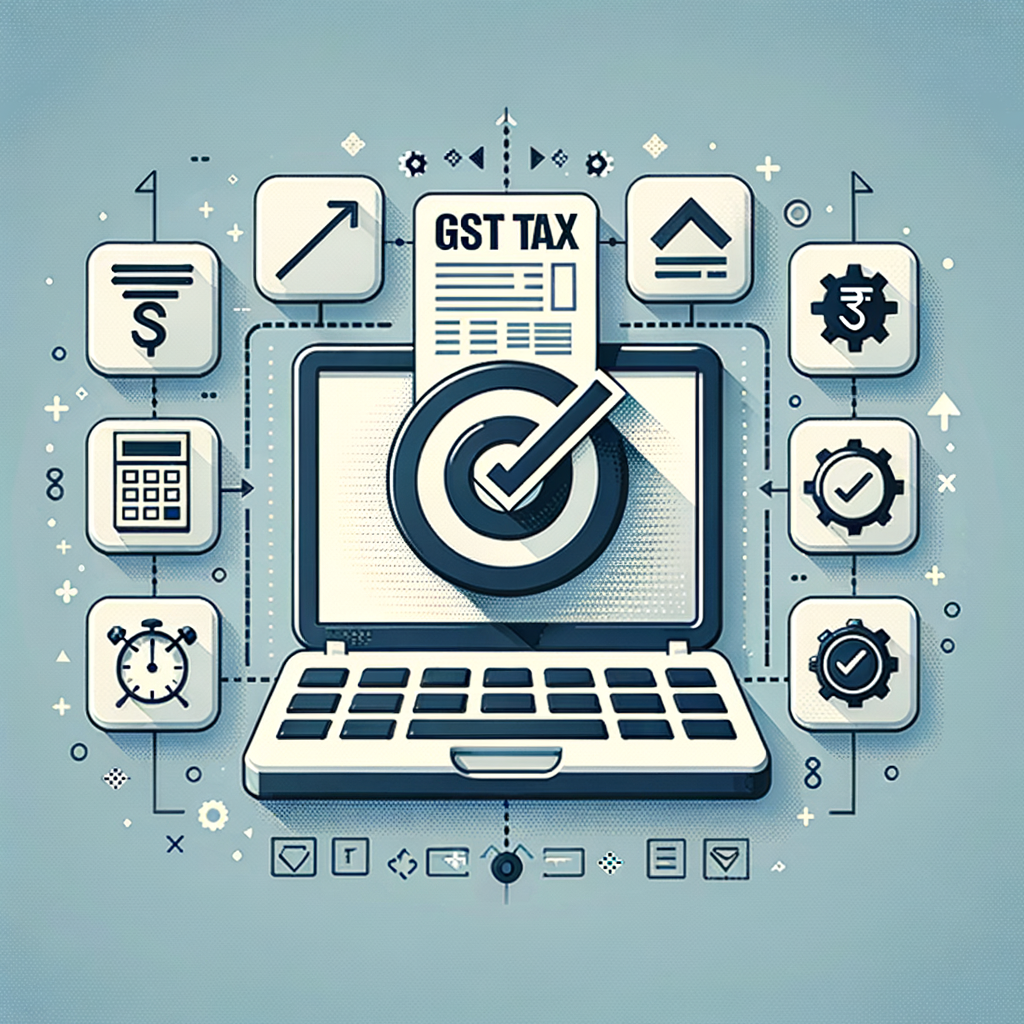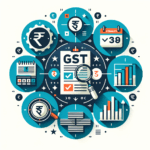Using Accounting Software for Accurate GST Return Filings: A Guide for Indian Businesses
For many Indian small business owners, the end of the month or quarter brings a familiar sense of dread: it’s time for GST return filing. This process, often tangled in spreadsheets and manual calculations, can be complex, time-consuming, and fraught with risk. However, transitioning from these outdated methods to a modern accounting software for GST filing can transform this stressful chore into a streamlined, accurate, and almost effortless task. The stakes are high; inaccurate GST filings can lead to significant financial penalties, mounting interest, and unwelcome notices from the tax department. Using the right accounting software for GST filing India not only ensures you stay compliant with the law but also provides invaluable peace of mind, allowing you to focus on growing your business. This guide will walk you through the challenges of manual filing, the key benefits of automation, and how to choose and use software for flawless GST compliance.
The Hidden Costs of Manual GST Filing for Small Businesses
Before appreciating the solution, it’s crucial to understand the problem. Relying on manual ledgers or spreadsheets for GST compliance might seem like a cost-saving measure, but it often carries hidden costs that can severely impact a small business’s financial health and operational efficiency. These manual methods are a breeding ground for errors and inefficiencies that dedicated software is designed to eliminate.
The High Risk of Human Error and Inaccuracies
The most significant drawback of manual filing is its susceptibility to human error. A simple data entry typo, a misplaced decimal point, or a minor miscalculation can have a cascading effect on your entire return. Common mistakes include incorrect calculations of CGST, SGST, and IGST, which can vary based on the location of the supply. Another frequent issue is using the wrong HSN/SAC codes for goods and services, leading to incorrect tax rates being applied. These seemingly small errors can result in an incorrect final tax liability, leading to either overpayment of tax (hurting your cash flow) or underpayment, which can trigger penalties and audits from tax authorities.
Time-Consuming Reconciliation of Invoices
One of the most tedious aspects of GST compliance is claiming Input Tax Credit (ITC). To do this correctly, you must manually match every purchase invoice with the data available in your GSTR-2A and GSTR-2B reports on the GST Portal. For a business with dozens or hundreds of monthly transactions, this process is a monumental time drain. It involves printing reports, cross-referencing line items, and painstakingly identifying mismatches between your records and your suppliers’ filings. This manual effort not only consumes valuable hours that could be spent on core business activities but also increases the risk of missing out on eligible ITC claims, directly impacting your profitability.
Difficulty in Staying Updated with Changing GST Laws
The GST regime is dynamic, with the government frequently issuing notifications, circulars, and amendments to rules, rates, and return formats. For a busy entrepreneur, keeping track of every change is a significant challenge. A manual system, such as an Excel template, does not update itself. This means you are responsible for monitoring these changes and manually updating your calculation formulas and templates. Failing to incorporate a rate change or a new compliance requirement can quickly render your filings non-compliant, exposing your business to unnecessary legal and financial risks.
Key Benefits of Using Accounting Software for GST Filing
The move to a dedicated software solution directly addresses the pitfalls of manual processes, offering a suite of advantages that enhance accuracy, efficiency, and financial control. The accounting software benefits for small businesses India are tangible and immediate, transforming GST compliance from a liability into a well-managed business function.
Automation for Unmatched Accuracy
The primary benefit of using software is the power of automation. It drastically reduces the risk of human error by automating tax calculations. Once you set up the correct HSN/SAC codes and corresponding GST rates for your products and services, the software automatically applies the correct CGST, SGST, or IGST on every invoice you create. This eliminates manual calculation errors and ensures consistency across all your transactions. Furthermore, the software auto-populates GST-compliant invoices with all necessary details, saving time and preventing data entry mistakes. This level of automation makes it an efficient GST return software for businesses, guaranteeing a higher degree of accuracy in your tax liability calculations.
Simplified Input Tax Credit (ITC) Management
Modern accounting software revolutionizes ITC management. Instead of spending hours manually matching invoices, the software features automated reconciliation tools. It can directly fetch data from the GST Portal (your GSTR-2B) and compare it against your purchase records in just a few clicks. The system instantly flags any mismatches, such as invoices that your supplier has not uploaded or discrepancies in invoice values. This allows you to proactively follow up with suppliers to correct errors, ensuring you claim every rupee of ITC you are legally entitled to and maximizing your cash flow.
Real-Time Financial Visibility and Reporting
Beyond just tax filing, accounting software provides a complete, real-time picture of your business’s financial health. Interactive dashboards offer an at-a-glance view of your total sales, outstanding receivables, purchase expenses, and your current GST liability. This immediate access to critical data empowers you to make informed business decisions. You can generate essential financial reports like the Profit & Loss statement, Balance Sheet, and cash flow statements anytime, without waiting for a month-end manual compilation. This continuous financial clarity is invaluable for strategic planning and growth.
Seamless Generation of GST-Ready Reports
Perhaps the most significant time-saver is the software’s ability to automatically compile all your transaction data and generate the necessary GST reports. At the end of the tax period, the software can create GSTR-1 (for sales) and GSTR-3B (a summary return) reports in the government-prescribed format, often as a JSON file. This file can be directly uploaded to the GST Portal, reducing the filing process to a few simple steps. This seamless integration makes it the perfect GST compliance software for small enterprises, removing the technical complexities and ensuring your data is structured exactly as required by the tax authorities.
How to Choose the Best Accounting Software for GST Compliance in India
With numerous options available, selecting the right tool can feel overwhelming. The key is to focus on the features that are most critical for your business operations and GST compliance needs. The best accounting software for GST compliance India will be a combination of robust features, user-friendliness, and reliable support.
Must-Have Features for GST Compliance
When evaluating software, look for this core functionality:
- GST-Compliant Invoicing: The software must allow you to create professional invoices that include all mandatory fields, as outlined in our guide on Understanding GST Invoicing: A Detailed Guide, such as your GSTIN, the customer’s GSTIN, HSN/SAC codes, place of supply, and a clear breakdown of CGST, SGST, or IGST.
- Automated ITC Reconciliation: A non-negotiable feature. The ability to automatically match your purchase records with GSTR-2A/2B is essential for accurate ITC claims and minimizing tax outflow.
- Direct E-Way Bill & E-Invoicing Generation: For businesses whose turnover exceeds the specified threshold, the ability to generate e-invoices and e-way bills directly from the software is a massive time-saver and compliance necessity. A Guide to GST E-Way Bill Generation can provide more context on these requirements.
- Bank Reconciliation: A feature to connect your bank account and easily reconcile transactions helps ensure your books are always accurate and up-to-date.
Cloud-Based vs. Desktop Software: What’s Right for You?
You’ll generally choose between two types of software deployment:
| Feature | Cloud-Based Software | Desktop Software |
|---|---|---|
| Accessibility | Access your data from any device, anywhere with internet. | Accessible only on the computer where it is installed. |
| Data Storage | Data is stored securely on the provider’s servers. | Data is stored on your local hard drive. |
| Updates | Automatically updated by the provider to reflect new tax laws. | May require manual downloads and installation of updates. |
| Cost Model | Typically a monthly or annual subscription (SaaS model). | Usually a one-time purchase fee, may have annual maintenance costs. |
| Collaboration | Easy to grant access to your accountant or team members. | Collaboration can be more difficult and less real-time. |
For most small businesses, a cloud-based solution is often more flexible, cost-effective, and ensures you are always using the latest, compliant version of the software.
Prioritizing User-Friendliness and Customer Support
The most powerful software is useless if you can’t figure out how to use it. Look for a clean, intuitive interface that doesn’t require an accounting degree to navigate. Many providers offer free trials, which are a great way to test the software’s ease of use. Additionally, reliable customer support is crucial. When you run into an issue, especially close to a filing deadline, having access to quick and helpful support via phone, email, or chat can be a lifesaver.
From Invoice to Filing: A Simple Step-by-Step Process with Software
Using accounting software demystifies the entire GST filing process. Here’s a look at the typical, simplified workflow.
Step 1: Initial Setup and Configuration
The first step is a one-time setup where you enter your business details, including your company name, address, and, most importantly, your GSTIN. You will also configure your bank accounts, chart of accounts, and set up default HSN/SAC codes and tax rates for the goods or services you sell.
Step 2: Day-to-Day Transactions
As you run your business, you simply use the software for your daily operations. When you make a sale, you create a GST-compliant invoice directly in the system. When you make a purchase, you record the bill from your supplier. The software automatically calculates and records the GST component for each transaction, keeping your books organized and accurate in real-time.
Step 3: Monthly Reconciliation
At the end of each month, you perform two key reconciliations. First, you run the bank reconciliation feature to match all the transactions in your bank statement with the entries in your software. Second, you use the automated ITC reconciliation tool to compare your purchase records with the data in your GSTR-2B report, identifying any discrepancies that need attention.
Step 4: Generating and Filing Your Return
Once your data is reconciled and accurate, you navigate to the GST reports section of the software. With a few clicks, you can generate the data for your GSTR-1 and GSTR-3B. The software will typically provide this in a government-compatible JSON file. The final step is to log in to the official GST Portal, upload this file, verify the details, and submit your return, a process detailed in our How to File GST Returns Online: A Step-by-Step Guide of the GST Filing Process & Procedure.
Conclusion: Make GST Compliance Your Strength, Not Your Weakness
In today’s digital economy, modern accounting software for GST filing has shifted from being a luxury to an absolute necessity for Indian small businesses. It is the most effective way to ensure accurate, timely, and stress-free compliance with a complex tax system. By embracing automation, you not only save countless hours and prevent costly errors but also empower yourself with crystal-clear financial insights that are crucial for making smart business decisions. Don’t let GST filing be a monthly burden that distracts you from your passion.
Ready to streamline your finances but not sure where to start? The experts at TaxRobo can help you select and implement the perfect GST compliance software for your small enterprise and manage your filings with professional accuracy. Contact us today for a free consultation!
Frequently Asked Questions (FAQs)
1. Can accounting software file my GST return automatically?
Most accounting software simplifies the process by generating a GST-compliant file (like a JSON file) which you then need to upload to the official GST Portal. This is the most common method. Some advanced software offers direct API integration for pushing data to the portal, but the final submission and authentication must always be completed by you on the government’s official website.
2. Is investing in accounting software worth it for a very small business?
Absolutely. The time saved from manual data entry and reconciliation, combined with the financial penalties and interest avoided, often far outweighs the subscription cost of the software. Many affordable, cloud-based solutions are designed specifically for the needs and budgets of small businesses and freelancers in India, making it a highly valuable investment. This is one of the key accounting software benefits for small businesses India.
3. What is the most crucial feature to look for in an accounting software for GST filing?
While many features like invoicing and reporting are important, the most critical feature for financial impact is robust and accurate ITC reconciliation. The ability to automatically match your purchase data against GSTR-2B is vital. This feature directly protects your cash flow by ensuring you claim the full input tax credit you are eligible for, preventing financial leakage due to supplier errors or manual oversight.
4. Do I still need an accountant if I use GST software?
Yes, the roles are complementary. Software is a powerful tool that handles data processing, automation, and report generation efficiently. An accountant or a professional firm like TaxRobo provides the human expertise to interpret that data. They offer strategic financial advice, ensure you are compliant with the nuanced and ever-changing aspects of tax law, represent you during audits, and help you make informed business decisions based on the accurate reports your software provides. The software manages the “what,” while the accountant helps with the “so what” and “what’s next.” This expert guidance is precisely Why Hiring a Professional Accountant Can Save You Money, even when using advanced software.



